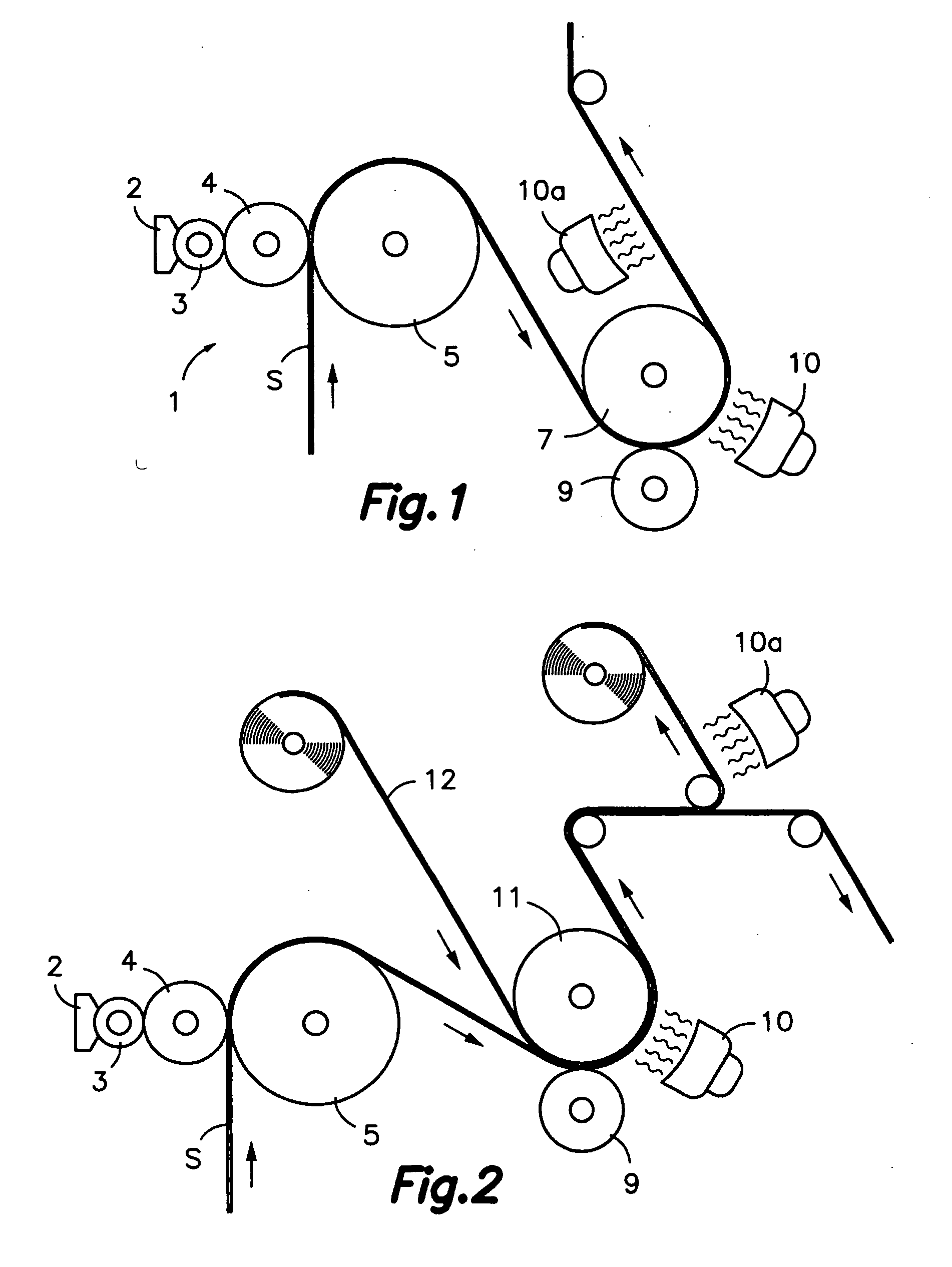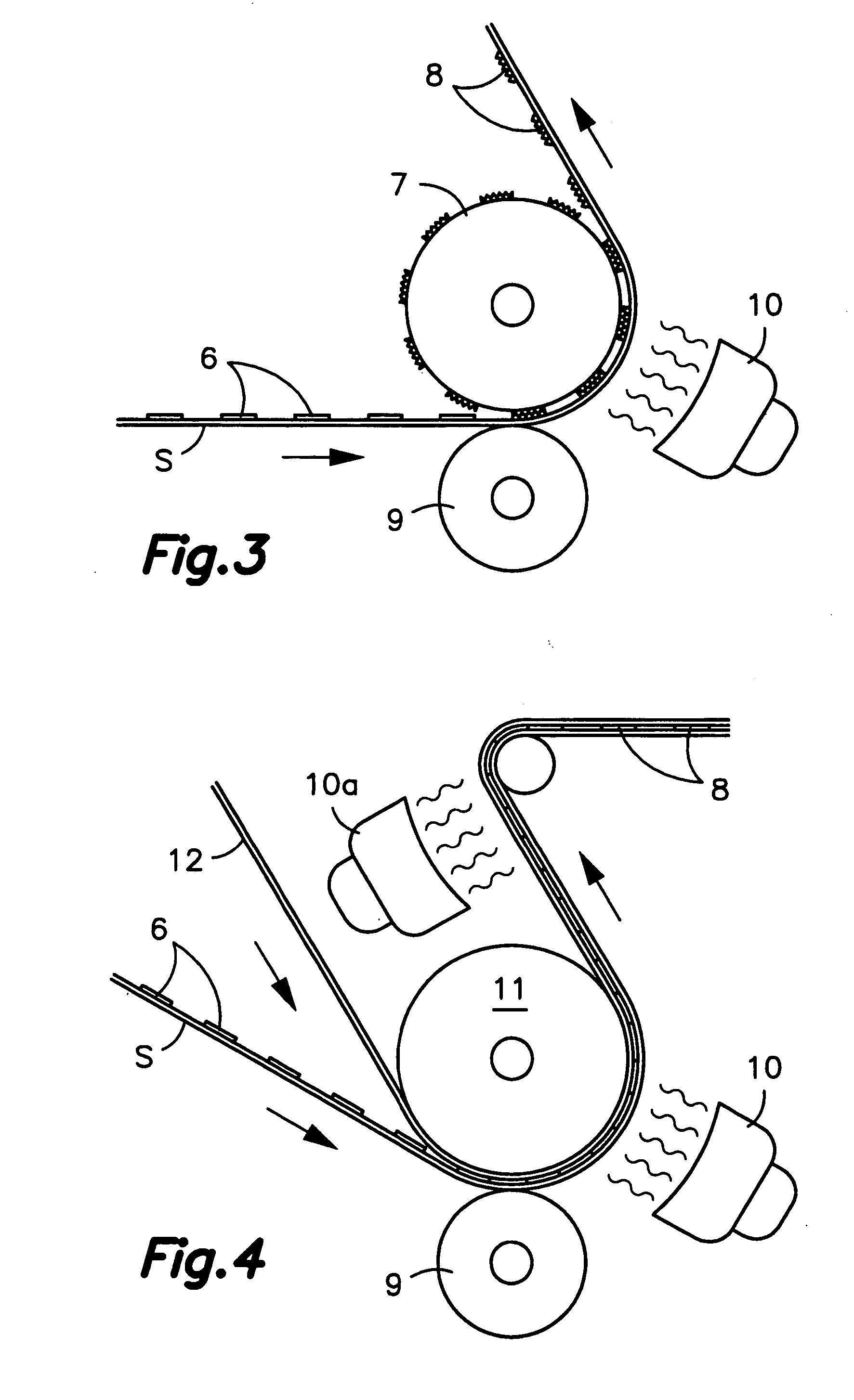Composition and a process for the preparation of coloured holograms
- Summary
- Abstract
- Description
- Claims
- Application Information
AI Technical Summary
Benefits of technology
Problems solved by technology
Method used
Image
Examples
Embodiment Construction
[0041]FIG. 1 is a schematic of one embodiment of a system of producing a relief hologram according to the above disclosed process.
[0042] The basic resin is commercially available. As previously mentioned, the pigment is added and dispersed in the base resin; the amount of pigment added is depending on the pigment nature and on its particle size.
[0043] More generally, the amount of pigment is within the range of 5% to 20% and preferably 13 to 17% by weight of the uncured resin, i.e. of the resin ready to be printed on the substrate.
[0044] If the resin is to be cured with UV light, a photoinitiator, i.e. a free radical generator, is also added.
[0045] The thus prepared resin is then fed to a resin container 2 of a printing group of a printing machine 1; the printing group includes an anilox roller 3 that draws resin from container 2 and transfers it to the cliche (or photopolymer) roller 4.
[0046] The cliché roller transfers the selected amounts of resin to selected areas of substr...
PUM
 Login to View More
Login to View More Abstract
Description
Claims
Application Information
 Login to View More
Login to View More - R&D
- Intellectual Property
- Life Sciences
- Materials
- Tech Scout
- Unparalleled Data Quality
- Higher Quality Content
- 60% Fewer Hallucinations
Browse by: Latest US Patents, China's latest patents, Technical Efficacy Thesaurus, Application Domain, Technology Topic, Popular Technical Reports.
© 2025 PatSnap. All rights reserved.Legal|Privacy policy|Modern Slavery Act Transparency Statement|Sitemap|About US| Contact US: help@patsnap.com


